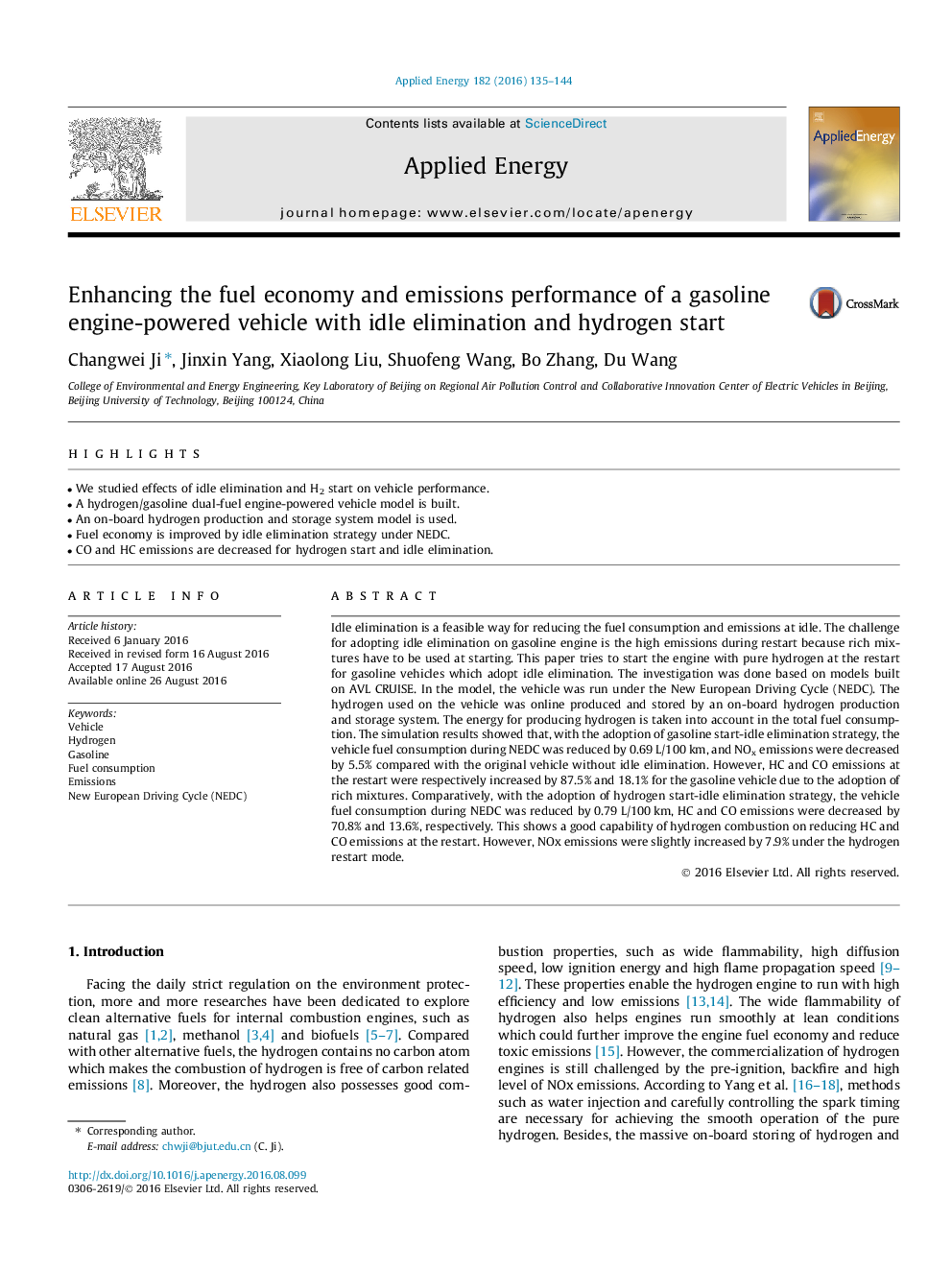| کد مقاله | کد نشریه | سال انتشار | مقاله انگلیسی | نسخه تمام متن |
|---|---|---|---|---|
| 6478841 | 1428106 | 2016 | 10 صفحه PDF | دانلود رایگان |
- We studied effects of idle elimination and H2 start on vehicle performance.
- A hydrogen/gasoline dual-fuel engine-powered vehicle model is built.
- An on-board hydrogen production and storage system model is used.
- Fuel economy is improved by idle elimination strategy under NEDC.
- CO and HC emissions are decreased for hydrogen start and idle elimination.
Idle elimination is a feasible way for reducing the fuel consumption and emissions at idle. The challenge for adopting idle elimination on gasoline engine is the high emissions during restart because rich mixtures have to be used at starting. This paper tries to start the engine with pure hydrogen at the restart for gasoline vehicles which adopt idle elimination. The investigation was done based on models built on AVL CRUISE. In the model, the vehicle was run under the New European Driving Cycle (NEDC). The hydrogen used on the vehicle was online produced and stored by an on-board hydrogen production and storage system. The energy for producing hydrogen is taken into account in the total fuel consumption. The simulation results showed that, with the adoption of gasoline start-idle elimination strategy, the vehicle fuel consumption during NEDC was reduced by 0.69Â L/100Â km, and NOx emissions were decreased by 5.5% compared with the original vehicle without idle elimination. However, HC and CO emissions at the restart were respectively increased by 87.5% and 18.1% for the gasoline vehicle due to the adoption of rich mixtures. Comparatively, with the adoption of hydrogen start-idle elimination strategy, the vehicle fuel consumption during NEDC was reduced by 0.79Â L/100Â km, HC and CO emissions were decreased by 70.8% and 13.6%, respectively. This shows a good capability of hydrogen combustion on reducing HC and CO emissions at the restart. However, NOx emissions were slightly increased by 7.9% under the hydrogen restart mode.
Journal: Applied Energy - Volume 182, 15 November 2016, Pages 135-144
